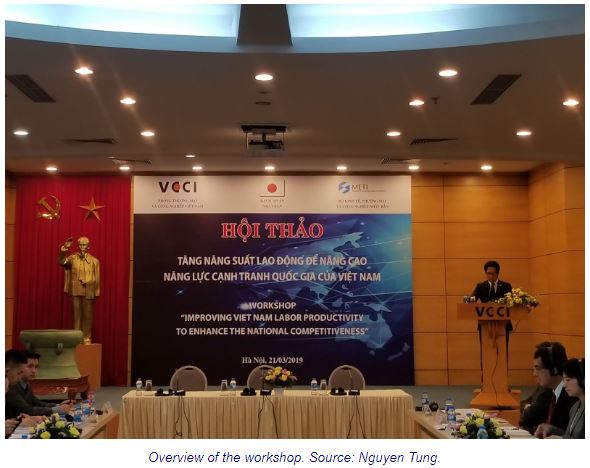Vietnam under growing pressure to catch up with productivity of regional peers
“Vietnam’s labor productivity remains low compared to regional countries,” Loc said at a workshop discussing ways to improve Vietnam’s productivity jointly-held by VCCI and Japan’s Ministry of Economy, Trade and Industry (METI) on March 21.
Based on the 2011 purchasing power parity, Vietnam’s productivity reached US$10,232, equivalent to 7.2% of Singapore’s, 18.4% of Malaysia’s, 36.2% of Thailand’s, 43% of Indonesia’s and the 55% of the Philippines’, informed Loc.
Japanese Ambassador to Vietnam Kumio Umeda said Vietnam has been maintaining rapid growth rate and attracting huge amount of foreign capital over the past few years.
“However, in order for Vietnam to take advantage of this momentum and achieve sustainable growth, the country has to address the issue of low productivity,” Umeda added.
“Vietnamese people are hardworking and talented, therefore, if appropriate policies and actions are in place, I am confident that Vietnam is fully capable of reaching the target,” Umeda stated.
At the workshop, Nguyen Duc Thanh, director of the Vietnam Institute for Economic and Policy Research (VEPR), said Vietnam has been working on productivity for many decades and there have been high-level resolutions of Party conferences and government policies, but they “remained ineffective.”
Thanh pointed to some reasons, including the lack of continued top-level support and commitment; lack of incentives for firms, workers, enterprises, and others to participate; traditional government and ministerial bureaucracy and delays; and insufficient international support.
“As a result, productivity movement so far has been too small, scattered and only partially implemented, and did not reach the critical point to change the national mindset and produce visible results,” Thanh continued.
The situation, therefore, requires Vietnam to have stronger and more comprehensive actions to improve the industries’ labor productivity, he added.
This includes a focus on improving labor productivity of industries that create a foundation and long-term growth motivation for the economy such as industry and services through continuing international integration and improving the business environment.
Moreover, Vietnam has to foster labor productivity growth in particular and economic growth in general through improving total factor productivity (TFP), which is determined by how efficiently and intensely the inputs are utilized in production.
Thanh proposed the creation of a national productivity movement to keep up with the actual developments in productivity in Vietnam, while exploring the option of establishing the National Productivity Council directed by the prime minister and drastically implementing the goal of boosting productivity in the next decade.
“At the same time, it is vital to integrate the national productivity growth target into the indicator system of the Socio-Economic Development Plan 2021-2025, towards 2030,” Thanh concluded.


 Thailand
Thailand




